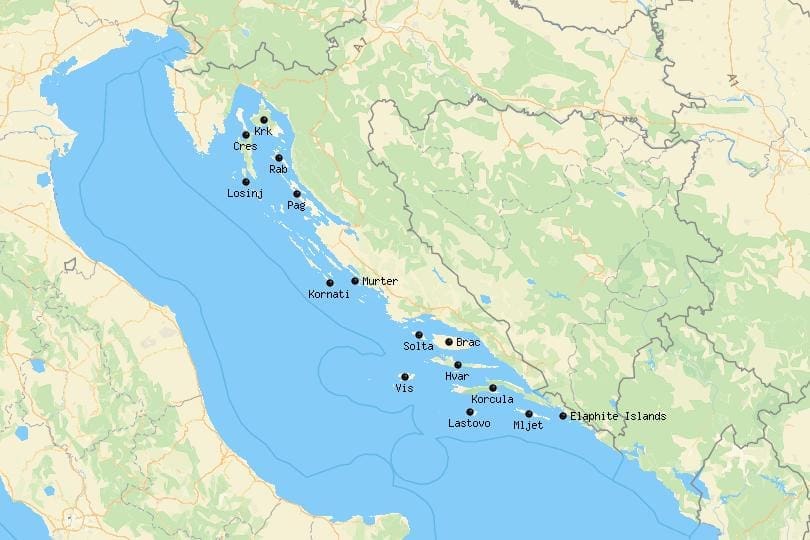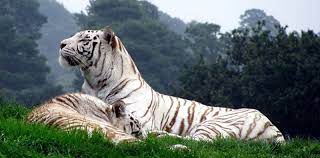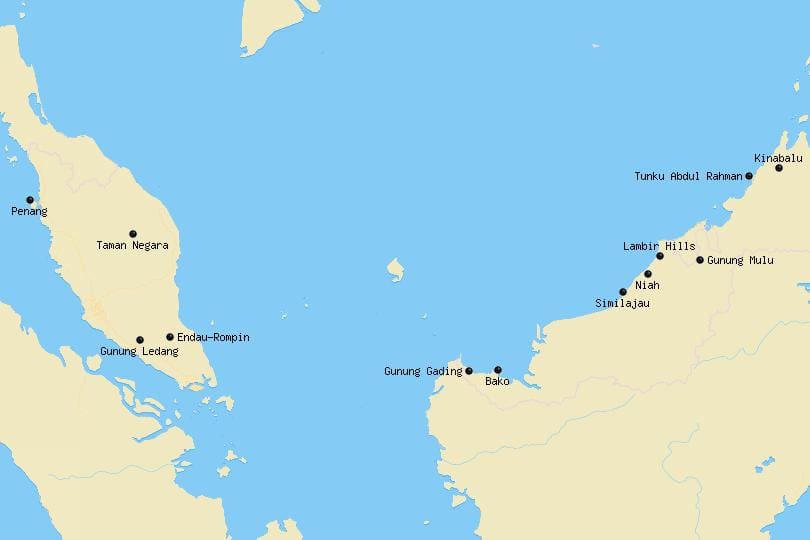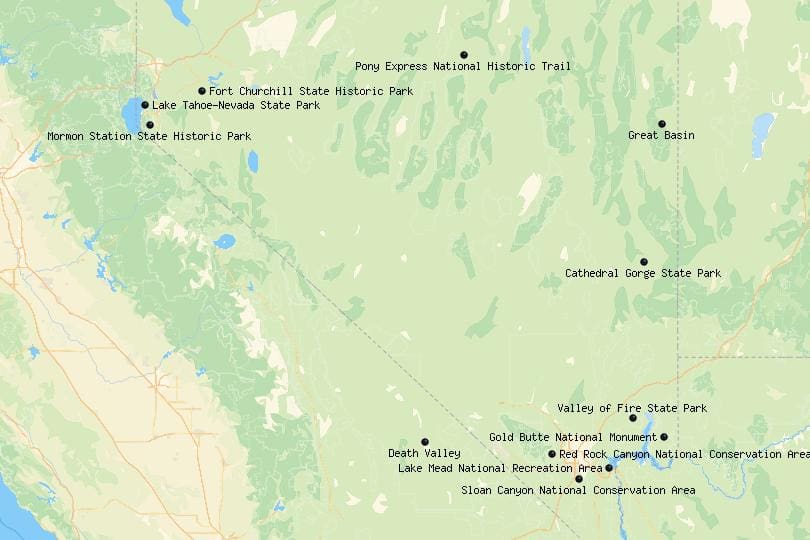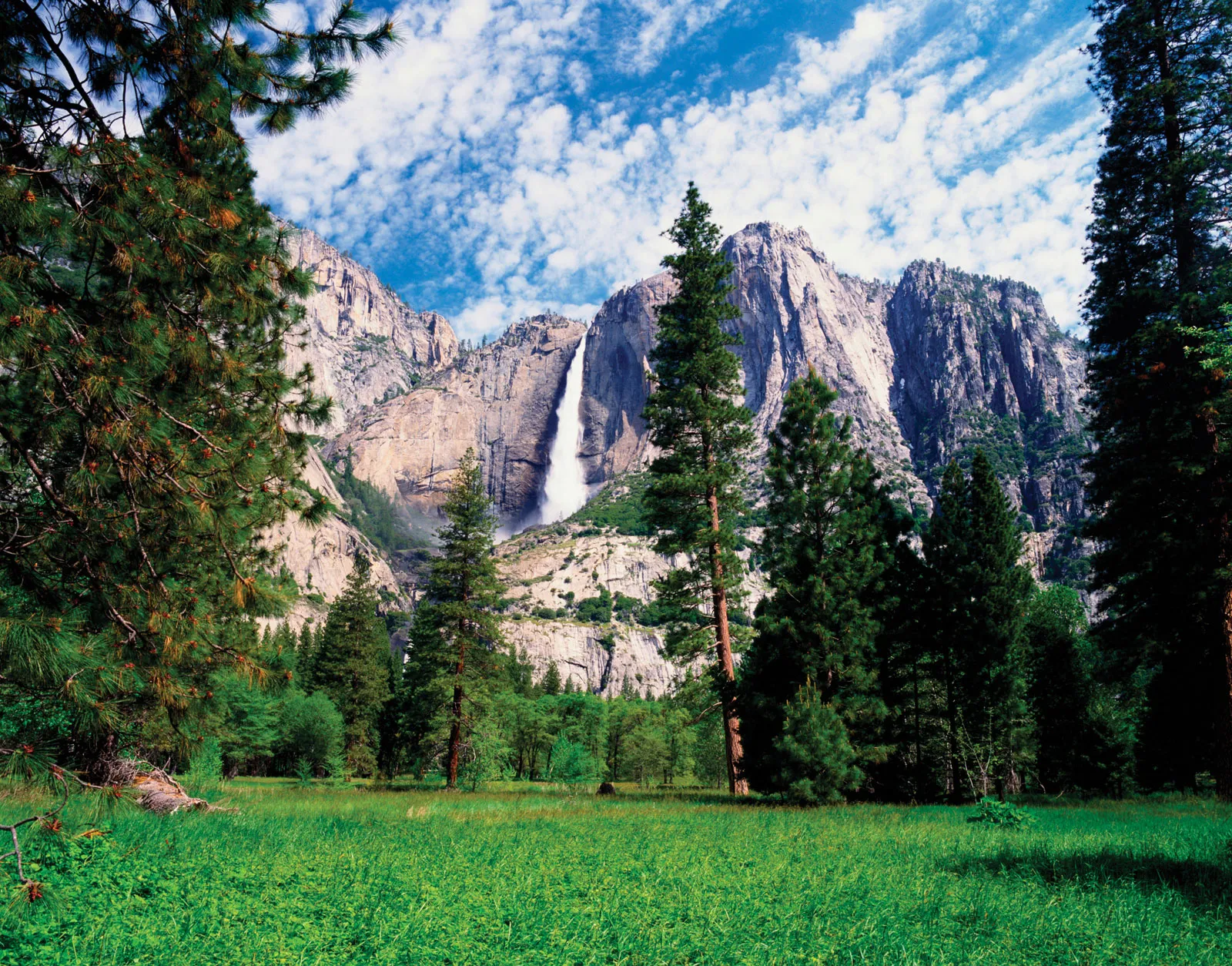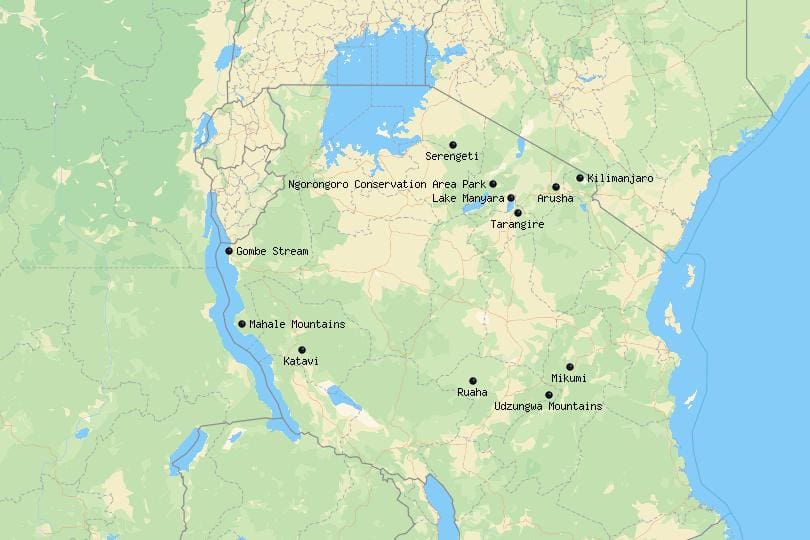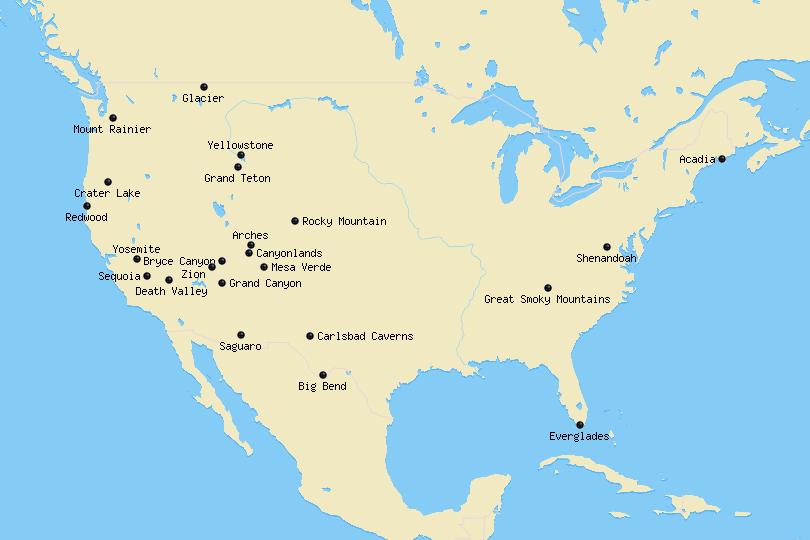Montana, often referred to as “Big Sky Country,” is a haven for nature lovers and outdoor enthusiasts. With its vast landscapes, towering mountains, pristine lakes, and abundant wildlife, the state offers some of the most breathtaking national and state parks in the United States. Whether you’re an avid hiker, a wildlife photographer, or someone seeking solitude amidst untouched wilderness, Montana’s parks have something for everyone. In this comprehensive guide, we’ll explore the 12 best national and state parks in Montana , delving into their unique features, must-see attractions, and practical travel tips to help you plan your next adventure.
Why Montana’s Parks Are Worth Visiting
Before diving into the specifics, let’s understand why Montana stands out as a premier destination for park enthusiasts. The state is home to Glacier National Park , one of the crown jewels of the U.S. National Park System, alongside lesser-known but equally stunning gems like Bannack State Park and Lewis and Clark Caverns State Park . These parks are not just about scenic beauty; they also offer rich historical significance, diverse ecosystems, and endless opportunities for outdoor recreation.
Montana’s parks are perfect for those who crave adventure and tranquility alike. From hiking through rugged trails to kayaking on serene lakes, from spotting grizzly bears to marveling at ancient limestone caves, the possibilities are endless. Let’s dive deeper into the best national and state parks in Montana and uncover what makes each one special.
1. Glacier National Park: Crown Jewel of the Rockies
Overview
Glacier National Park is undoubtedly Montana’s most famous park and a bucket-list destination for travelers worldwide. Spanning over 1 million acres , it boasts dramatic mountain peaks, turquoise alpine lakes, and over 700 miles of hiking trails . Known as the “Crown of the Continent,” this park is a UNESCO World Heritage Site and a Biosphere Reserve. Its diverse ecosystem supports over 1,000 plant species and hundreds of animal species, making it a living laboratory for biologists and ecologists.
The park’s landscape was shaped by ancient glaciers that carved out valleys and created the iconic U-shaped formations seen today. While the glaciers themselves are receding due to climate change, their legacy remains etched into the land. Glacier National Park is a place where time seems to stand still, offering visitors a chance to step back into a world untouched by modernity.
Must-See Attractions
Going-to-the-Sun Road
This iconic 50-mile scenic drive is one of the most photographed roads in the world. Carved into the side of steep mountains, it winds through Glacier’s heart, offering jaw-dropping views of glaciers, valleys, and waterfalls. The road reaches its highest point at Logan Pass, elevation 6,646 feet, where you can access several popular hiking trails. During peak season (June to September), traffic can be heavy, so plan accordingly.
Hidden Lake Overlook
A moderate 2.8-mile round-trip hike leads to this picturesque spot where you can often spot mountain goats and bighorn sheep grazing near the trail. In summer, wildflowers blanket the meadows, creating a kaleidoscope of colors. For a longer adventure, continue down to Hidden Lake itself, though be prepared for potential bear sightings.
Grinnell Glacier
For experienced hikers, the Grinnell Glacier Trail is a challenging yet rewarding 10.6-mile round trip. Along the way, you’ll pass alpine meadows, cascading waterfalls, and stunning vistas before reaching one of the park’s remaining active glaciers. The glacier has been shrinking rapidly over the past century, so visiting soon ensures you witness this natural wonder before it disappears entirely.
Many Glacier Valley
Often called the “Switzerland of North America,” Many Glacier Valley is a paradise for hikers and photographers. Trails here lead to pristine lakes like Swiftcurrent Lake and Iceberg Lake, where chunks of ice float even in summer. Wildlife sightings are common, including moose, elk, and occasionally wolves.
Wildlife Highlights
Glacier is home to a wide variety of wildlife, including grizzly bears, black bears, moose, elk, bighorn sheep, mountain goats, and wolves. Always carry bear spray and know how to use it. Maintain a safe distance when observing these majestic creatures, as they are wild animals and unpredictable. Rangers often host educational programs about coexisting safely with wildlife—attend one if possible.
Activities Beyond Hiking
While hiking dominates the agenda, there’s much more to do in Glacier:
- Boating : Rent a kayak or canoe to explore lakes such as Lake McDonald or Two Medicine Lake.
- Fishing : Cast your line for trout in the park’s crystal-clear streams and lakes. A valid Montana fishing license is required.
- Ranger-Led Programs : Join guided walks, talks, and stargazing events to deepen your understanding of the park’s ecology and history.
- Winter Sports : In winter, cross-country skiing and snowshoeing open up new ways to experience the park’s quiet beauty.
Travel Tips
- Best Time to Visit : Late spring (May-June) and early fall (September-October) offer mild weather and fewer crowds compared to the busy summer months.
- Lodging Options : Book accommodations well in advance, as lodging options fill up quickly. Popular choices include Many Glacier Hotel, Lake McDonald Lodge, and rustic chalets scattered throughout the park.
- Weather Preparedness : Weather in Glacier can change rapidly. Pack layers, rain gear, and sturdy footwear suitable for uneven terrain.
- Safety First : Stay on designated trails, especially in areas prone to avalanches or rockslides. Be mindful of altitude sickness if you’re not accustomed to higher elevations.
“Glacier National Park is a place where time seems to stand still, offering a glimpse into the raw beauty of nature.”
Nearby Hotels and Restaurants
- Hotels :
- Many Glacier Hotel : Located within the park, this historic lodge offers breathtaking views of Swiftcurrent Lake.
- Lake McDonald Lodge : A charming Swiss-style chalet nestled along the shores of Lake McDonald.
- Belton Chalet : Just outside the park’s west entrance, this cozy inn combines rustic charm with modern amenities.
- Restaurants :
- Belton Chalet : Known for its hearty meals and locally sourced ingredients.
- Eddie’s Café : A casual eatery serving classic American fare near the park’s west entrance.
- Two Sisters Café : Offers creative dishes inspired by Montana’s agricultural bounty.
2. Yellowstone National Park (Montana Section): A Wonderland of Geothermal Wonders
Overview
Yellowstone National Park spans three states—Wyoming, Idaho, and Montana—but its Montana section offers unique access points and experiences. Famous for its geysers, hot springs, and diverse wildlife, Yellowstone is a geological marvel unlike any other. Established in 1872, it was the first national park in the world and remains a symbol of conservation and preservation.
The Montana portion of Yellowstone includes the northeastern corner of the park, which encompasses Lamar Valley, Mammoth Hot Springs, and parts of the Bechler region. This area provides ample opportunities for wildlife viewing, geothermal exploration, and outdoor recreation.
Must-See Attractions
Mammoth Hot Springs
These terraces are formed by mineral deposits and create a surreal landscape reminiscent of alien worlds. As hot water rises from underground, it leaves behind travertine formations that constantly evolve. Boardwalks allow visitors to safely explore the area, with highlights including Liberty Cap and Minerva Terrace.
Lamar Valley
Often called the “Serengeti of America,” this valley is prime for wildlife watching. Bison herds roam freely, and wolf packs are frequently spotted during dawn and dusk. Bring binoculars or a telephoto lens to capture close-up shots without disturbing the animals.
Boiling River
Located near the park’s north entrance, Boiling River is a natural hot spring where cold river water mixes with thermal runoff. It’s one of the few places in Yellowstone where swimming is allowed, provided you follow posted guidelines. Soak in the warm waters after a long day of exploring—it’s a rejuvenating experience!
Tower Fall
A short hike leads to this stunning 132-foot waterfall, framed by towering cliffs. Interpretive signs provide insights into the area’s geology and history, making it a great stop for families.
Activities
- Wildlife Safaris : Guided tours increase your chances of spotting elusive animals like wolves and grizzlies.
- Guided Ranger Programs : Learn about Yellowstone’s geothermal features, geology, and cultural heritage from knowledgeable rangers.
- Photography Tours : Capture the park’s vibrant colors and dynamic landscapes under expert guidance.
- Horseback Riding : Several outfitters offer guided rides through scenic trails, allowing you to explore Yellowstone from a different perspective.
Travel Tips
- Clothing Layers : Temperatures can fluctuate dramatically, so dress in layers to adapt to changing conditions.
- Hydration : High altitudes mean dry air, so drink plenty of water to stay hydrated.
- Bear Safety : Carry bear spray and make noise while hiking to avoid surprising bears.
- Geothermal Etiquette : Stay on boardwalks and marked paths around geothermal areas to prevent accidents and preserve fragile ecosystems.
“Yellowstone’s geothermal wonders remind us of the Earth’s incredible power and beauty.”
Nearby Hotels and Restaurants
- Hotels :
- Roosevelt Lodge : Rustic cabins surrounded by pine forests, ideal for immersing yourself in nature.
- Mammoth Hot Springs Hotel : Offers comfortable rooms and easy access to the hot springs.
- Gardiner’s Yellowstone Gateway Inn : A convenient option just outside the park’s north entrance.
- Restaurants :
- Yellowstone Grill : Serves burgers, sandwiches, and salads in a relaxed setting.
- Old Faithful Inn Dining Room : Enjoy fine dining with panoramic views of the iconic geyser.
- Chico Hot Springs Resort : Located nearby, this restaurant specializes in farm-to-table cuisine.
3. Bannack State Park: A Step Back in Time
Overview
Bannack State Park is a ghost town turned state park, preserving the history of Montana’s gold rush era. Located near Dillon, this park offers a fascinating blend of history and nature. Once a thriving mining community, Bannack reached its peak in the late 19th century before declining as gold deposits dwindled. Today, it serves as a living museum, inviting visitors to explore its preserved buildings and learn about its storied past.
Walking through Bannack feels like stepping into a Western movie set. Wooden structures line dirt streets, and interpretive signs share tales of lawlessness, prosperity, and eventual decline. The park hosts an annual event called Bannack Days , which brings the town back to life with reenactments, live music, and pioneer activities.
Must-See Attractions
Historic Buildings
Over 60 preserved structures remain standing, including the old schoolhouse, sheriff’s office, and Masonic Lodge. Each building tells a story, from the gallows where notorious outlaw Henry Plummer met his fate to the hotel that once welcomed weary travelers.
Bannack Days
Held annually in July, Bannack Days transforms the ghost town into a bustling hub of activity. Visitors can pan for gold, watch blacksmith demonstrations, and enjoy traditional cowboy poetry readings. It’s a family-friendly event that brings history to life.
Cemetery
The cemetery offers a somber reminder of the hardships faced by early settlers. Headstones mark graves dating back to the 1860s, providing insight into the lives lost during Bannack’s heyday.
Activities
- Gold Panning : Try your hand at panning for gold in Grasshopper Creek, where prospectors struck it rich over a century ago.
- Historical Tours : Guided tours provide context and anecdotes about the town’s colorful past.
- Birdwatching : The surrounding prairie supports a variety of bird species, including golden eagles and sandhill cranes.
Travel Tips
- Footwear : Wear comfortable shoes for walking on uneven terrain, as many paths are unpaved.
- Photography : Bring a camera to capture the rustic charm of the ghost town, particularly during golden hour.
- Seasonal Considerations : Winter visits require preparation for snow and icy conditions, while summers can be hot and dusty.
“Bannack State Park is a living museum that transports you to Montana’s Wild West past.”
Nearby Hotels and Restaurants
- Hotels :
- Super 8 by Wyndham Dillon : Affordable and conveniently located near the park.
- Beaverhead Inn : Offers cozy accommodations with a touch of local hospitality.
- Restaurants :
- The Stockman Bar : Known for its hearty steaks and friendly atmosphere.
- Main Street Diner : Serves classic diner food in a nostalgic setting.
4. Lewis and Clark Caverns State Park: Underground Marvels
Overview
Lewis and Clark Caverns State Park is named after the famous explorers Meriwether Lewis and William Clark, although they never actually visited the caverns themselves. Located near Whitehall, this park is home to one of the most decorated limestone cavern systems in the Northwest. The caverns were discovered in the early 20th century and have since become a popular destination for families, spelunkers, and geology enthusiasts.
The caverns feature intricate formations of stalactites, stalagmites, flowstones, and helictites, creating an otherworldly underground landscape. Guided tours take visitors deep into the caves, where they can marvel at these natural wonders while learning about the geologic processes that formed them over millions of years.
Must-See Attractions
Guided Cave Tours
The main attraction here is the guided cave tour, which takes you through well-lit passages adorned with stunning mineral formations. Highlights include the “Parade of the Elephants,” a cluster of stalagmites resembling pachyderms, and the “Cathedral Room,” known for its acoustics and towering columns. Tours are available year-round but may vary in length depending on the season.
Campground
The park’s campground offers both tent and RV sites, making it a convenient base for exploring the area. Facilities include picnic tables, fire rings, and access to restrooms and showers. Campers often rave about the clear night skies, perfect for stargazing away from city lights.
Nature Trails
Above ground, several hiking trails wind through the park’s rolling hills and forests. The Dense Trail is a favorite among birdwatchers, offering opportunities to spot species like mountain bluebirds and red-tailed hawks. For a shorter walk, try the Visitor Center Loop , which provides interpretive signs about local flora and fauna.
Activities
- Hiking : Explore the park’s network of trails, ranging from easy loops to moderate climbs.
- Camping : Spend a night under the stars at the park’s well-maintained campground.
- Educational Programs : Rangers host talks and demonstrations about cave formation, geology, and wildlife.
- Photography : Capture the intricate details of the caverns and the surrounding landscapes.
Travel Tips
- Reservations : Book cave tour tickets ahead of time, especially during peak summer months.
- Clothing : Dress warmly, as the temperature inside the caves remains cool year-round (around 50°F).
- Footwear : Wear sturdy shoes with good traction, as some parts of the tour involve stairs and uneven surfaces.
- Accessibility : While the park strives to accommodate all visitors, the cave tours are not wheelchair accessible due to narrow passages and steep steps.
“The Lewis and Clark Caverns are a hidden treasure, offering a glimpse into the Earth’s mysterious underworld.”
Nearby Hotels and Restaurants
- Hotels :
- Comfort Inn Whitehall : A budget-friendly option with modern amenities.
- Jefferson City Motel : Offers clean, comfortable rooms close to the park.
- Restaurants :
- Silver Star Café : Known for its hearty breakfasts and homemade pies.
- Canyon Creek Steakhouse : Serves premium cuts of beef and locally sourced ingredients.
5. Flathead Lake State Park: Serenity by the Water
Overview
Flathead Lake is the largest freshwater lake west of the Mississippi River, and its state park system encompasses multiple units along the shoreline. Surrounded by orchards, vineyards, and charming small towns, this area is a paradise for foodies, boaters, and outdoor enthusiasts alike. The lake’s crystal-clear waters reflect the towering Mission Mountains, creating a postcard-perfect setting.
Each unit of Flathead Lake State Park offers something unique, from secluded beaches to boat launches and picnic areas. Whether you’re looking to relax by the water or embark on a multi-day kayaking adventure, this park has it all.
Must-See Attractions
Wild Horse Island
Accessible only by boat, Wild Horse Island is a pristine sanctuary within the lake. Despite its name, wild horses are rarely seen, but bighorn sheep, mule deer, and bald eagles are common sights. Hikers can explore five miles of trails that traverse the island’s rugged terrain, offering panoramic views of the lake and surrounding mountains.
Kerr Dam
Located near Polson, Kerr Dam is a hydroelectric facility that also serves as a scenic overlook. Visitors can learn about renewable energy production while enjoying sweeping vistas of the lake and dam spillway. During spring runoff, the cascading water creates a dramatic display.
Wayfarers Unit
This unit is particularly popular for its sandy beach, picnic shelters, and proximity to Bigfork, a quaint arts community. It’s an ideal spot for swimming, sunbathing, and launching non-motorized watercraft.
Activities
- Boating : Rent a pontoon boat, kayak, or paddleboard to explore the vast expanse of the lake.
- Fishing : Cast your line for kokanee salmon, lake trout, and yellow perch. A valid Montana fishing license is required.
- Picnicking : Enjoy a leisurely meal at one of the park’s many picnic areas, complete with grills and tables.
- Birdwatching : The lake attracts migratory birds, including ospreys and pelicans, making it a haven for avian enthusiasts.
Travel Tips
- Water Safety : Always wear a life jacket when boating or paddling, and be aware of changing weather conditions.
- Local Markets : Visit nearby farmers’ markets in Polson or Kalispell for fresh produce, jams, and baked goods.
- Peak Season : Summer weekends can get crowded, so arrive early to secure parking and prime spots on the beach.
“Flathead Lake State Park combines natural beauty with culinary delights, making it a must-visit destination.”
Nearby Hotels and Restaurants
- Hotels :
- The Lodge at Whitefish Lake : A luxury lakeside retreat with upscale accommodations.
- Kona Kai Resort : Offers cozy cottages and direct access to Flathead Lake.
- Restaurants :
- Flathead Lake Brewing Co. : Known for its craft beers and pub fare.
- Blue Bayou Restaurant : Serves seafood and steaks with lakefront views.
6. Makoshika State Park: Badlands Beauty
Overview
Makoshika State Park, located near Glendive, is Montana’s largest state park and a gateway to the badlands. Its rugged terrain, sculpted by wind and water over millions of years, creates a surreal and almost alien landscape. The park’s name comes from a Lakota phrase meaning “bad land” or “land of bad spirits,” though visitors find it anything but foreboding.
In addition to its striking scenery, Makoshika is renowned for its fossil-rich soil. Dinosaurs once roamed these lands, and paleontologists continue to uncover fossils of duckbill dinosaurs, Tyrannosaurus rex, and other prehistoric creatures. Interpretive exhibits at the visitor center provide insights into the region’s ancient past.
Must-See Attractions
Cap Rock Trail
This moderate 1.8-mile loop leads to a viewpoint overlooking the badlands. Along the way, you’ll pass eroded sandstone formations and interpretive signs explaining the geology of the area. Sunrise and sunset are magical times to hike this trail, as the soft light enhances the colors of the rocks.
Duckbill Dinosaur Fossils
Visitors can see replicas of fossils discovered in the park, including those of hadrosaurs (duckbill dinosaurs). These herbivorous giants roamed the region over 65 million years ago, leaving behind clues to their existence in the form of bones and tracks.
Amphitheater
The park’s natural amphitheater hosts events such as concerts and plays during the summer. Check the schedule to see if any performances coincide with your visit.
Activities
- Fossil Hunting : While collecting fossils is prohibited, guided tours allow participants to assist in excavations.
- Hiking : Explore over 12 miles of trails that range from easy walks to challenging treks.
- Stargazing : The lack of light pollution makes Makoshika an excellent spot for observing constellations and meteor showers.
Travel Tips
- Trail Conditions : Some trails are steep and rocky, so wear sturdy boots and bring trekking poles if needed.
- Cell Service : Coverage is spotty, so download offline maps before heading out.
- Seasonal Access : Winter visits require snowshoes or cross-country skis, as roads may be impassable.
“Makoshika State Park is a testament to the Earth’s ancient history, waiting to be explored.”
Nearby Hotels and Restaurants
- Hotels :
- Holiday Inn Express Glendive : Offers comfortable rooms and complimentary breakfast.
- Sleep Inn : A budget-friendly option with basic amenities.
- Restaurants :
- Range Riders Café : Serves classic American dishes in a casual setting.
- The Stockman Bar : Known for its burgers and friendly atmosphere.
7. Medicine Rocks State Park: Mystical Formations
Overview
Medicine Rocks State Park is a lesser-known gem in southeastern Montana, revered for its sandstone pillars and spiritual significance to Native Americans. According to legend, the Cheyenne people used these formations as a sacred site for vision quests and ceremonies. Today, the park attracts adventurers, photographers, and those seeking solitude amidst its mystical beauty.
The sandstone pillars rise dramatically from the prairie, carved into bizarre shapes by centuries of wind and water erosion. Some formations resemble animals or human faces, adding to the park’s enigmatic allure. Petroglyphs etched into the rocks hint at the area’s rich cultural heritage.
Must-See Attractions
Sandstone Pillars
These towering formations are the park’s centerpiece, creating a labyrinth of narrow passages and hidden alcoves. Climbers love testing their skills on the rock walls, while others simply enjoy wandering through the maze-like terrain.
Petroglyphs
Ancient rock carvings depict symbols and figures that tell stories of the indigenous peoples who once inhabited the area. Look closely to spot images of bison, handprints, and abstract designs.
Sunset Views
As the sun dips below the horizon, the sandstone glows in shades of orange and pink, casting long shadows across the landscape. It’s a photographer’s dream and a moment of pure serenity.
Activities
- Rock Climbing : Bring your gear and tackle the challenging routes.
- Meditation : Find a quiet spot to reflect and connect with nature.
- Photography : Capture the interplay of light and shadow on the sandstone.
Travel Tips
- Pack Essentials : Facilities are minimal, so bring plenty of water, snacks, and sunscreen.
- Timing : Visit at sunrise or sunset for the best lighting and fewer crowds.
- Respect Sacred Sites : Avoid touching petroglyphs and leave no trace of your visit.
“Medicine Rocks State Park is a sacred space where nature and culture intersect.”
Nearby Hotels and Restaurants
- Hotels :
- Rodeway Inn Ekalaka : Simple accommodations for travelers on a budget.
- Prairie Nights Motel : Offers clean, comfortable rooms in a peaceful setting.
- Restaurants :
- Ekalaka Café : Serves homestyle meals with a focus on comfort food.
- Pioneer Bar : A local favorite for burgers and beer.
8. Little Bighorn Battlefield National Monument: A Historic Landmark
Overview
While not a traditional park, Little Bighorn Battlefield National Monument holds immense historical significance and offers a unique blend of natural beauty and cultural importance. Located near Crow Agency, this site commemorates the Battle of Little Bighorn, fought on June 25-26, 1876, between the U.S. Army’s 7th Cavalry Regiment, led by Lt. Col. George Armstrong Custer, and a coalition of Lakota Sioux, Northern Cheyenne, and Arapaho warriors. The battle marked a pivotal moment in American history and remains a poignant reminder of the conflicts between Native Americans and European settlers.
Today, the monument serves as both a memorial and an educational resource, preserving the stories of those who fought and died on these grounds. Visitors can walk among gravestones, interpretive markers, and monuments that honor the fallen soldiers and Native American warriors alike.
Must-See Attractions
Custer National Cemetery
This solemn site is the final resting place for thousands of soldiers and veterans, including those who perished at the Battle of Little Bighorn. Rows of white headstones stretch across the hillside, creating a powerful visual tribute to those who served their country.
Indian Memorial
Dedicated in 2003, the Indian Memorial honors the Native American warriors who fought valiantly to protect their homeland. The circular design symbolizes unity and healing, with engraved quotes from tribal leaders emphasizing peace and reconciliation. It’s a moving space for reflection and understanding.
Deep Ravine Trail
This 0.8-mile loop trail takes you through the battlefield, where interpretive signs recount key moments of the conflict. You’ll pass deep ravines and open prairies, imagining how the terrain influenced the outcome of the battle.
Activities
- Guided Tours : Rangers lead informative walks and talks, sharing insights into the battle’s tactics, participants, and aftermath.
- Self-Guided Exploration : Use the park’s audio guide or brochure to navigate the battlefield at your own pace.
- Historical Reenactments : During special events, actors portray scenes from the battle, bringing history to life.
Travel Tips
- Respect the Site : This is hallowed ground; maintain a respectful demeanor and avoid loud noises.
- Plan Extra Time : Allow at least two hours to fully explore the battlefield and visitor center exhibits.
- Weather Preparedness : Summers can be hot, so bring sunscreen and water, while winters require warm clothing due to snow and cold temperatures.
“Little Bighorn Battlefield is a poignant reminder of the complexities of history.”
Nearby Hotels and Restaurants
- Hotels :
- Crowne Plaza Billings : A modern hotel offering luxurious amenities and easy access to nearby attractions.
- Northern Hotel : Known for its elegant decor and exceptional service in downtown Billings.
- Restaurants :
- Jake’s Downtown : Serves upscale American cuisine in a chic setting.
- The Rex Restaurant : Offers steaks, seafood, and classic cocktails with a vintage vibe.
9. Chief Mountain: A Sacred Peak
Overview
Chief Mountain stands as one of Montana’s most iconic landmarks, straddling the eastern edge of Glacier National Park and the Blackfeet Indian Reservation. To the Blackfeet Nation, it is known as Ninaiistako , meaning “the Chief,” and holds deep spiritual significance. Rising abruptly from the surrounding plains, the mountain dominates the skyline and serves as a sacred site for prayer, vision quests, and ceremonies.
For outdoor enthusiasts, Chief Mountain offers challenging hikes and unparalleled views of Glacier’s rugged interior. Its isolation and stark beauty make it a favorite destination for experienced climbers and photographers.
Must-See Attractions
Scenic Views
The summit provides breathtaking vistas of Glacier National Park, Waterton Lakes National Park (Canada), and the vast prairies below. On clear days, you can see for miles in every direction—a reward well worth the effort of reaching the top.
Cultural Significance
Learn about the mountain’s role in Blackfeet mythology and traditions through interpretive materials and guided tours offered by tribal members. Understanding its cultural context adds depth to your experience.
Wildlife Encounters
The area around Chief Mountain supports diverse wildlife, including grizzly bears, mountain goats, and golden eagles. Always carry bear spray and keep a safe distance when observing animals.
Activities
- Hiking : The approach to Chief Mountain involves navigating steep, rocky terrain. Only attempt this hike if you’re physically fit and prepared for a strenuous climb.
- Cultural Tours : Arrange a guided tour with local Blackfeet guides to gain insight into the mountain’s spiritual importance.
- Photography : Capture the dramatic contrast between the flat prairie and the towering peak.
Travel Tips
- Permits : Obtain permits if planning to climb or camp in designated areas.
- Respect Tribal Lands : Follow all rules set by the Blackfeet Nation, including restrictions on photography and drone use.
- Safety First : Be prepared for unpredictable weather and difficult trail conditions.
“Chief Mountain stands as a symbol of reverence and resilience.”
Nearby Hotels and Restaurants
- Hotels :
- Glacier Guides Lodge : Offers cozy accommodations near Glacier National Park.
- Grouse Mountain Lodge : Features rustic charm and modern comforts in Whitefish.
- Restaurants :
- Two Sisters Café : Known for its creative dishes inspired by local ingredients.
- Altitude Brewing : Combines craft beer with hearty pub fare in a laid-back atmosphere.
10. Giant Springs State Park: Record-Breaking Waters
Overview
Giant Springs State Park, located near Great Falls, is home to the world’s shortest river—the Roe River , which flows just 201 feet before emptying into the Missouri River. But the park’s appeal goes far beyond this quirky record. It boasts one of the largest freshwater springs in the United States, producing millions of gallons of crystal-clear water daily. Surrounded by lush vegetation and scenic trails, this oasis provides a refreshing escape for families and nature lovers alike.
The park also features historical significance, as it was once part of the Lewis and Clark Expedition route. Interpretive displays highlight the explorers’ journey and the region’s indigenous heritage.
Must-See Attractions
Giant Springs
These massive springs bubble up from underground aquifers, creating a serene pool that feeds into the Roe River. Watch trout swim lazily in the clear waters or simply enjoy the peaceful ambiance.
Roe River
At just 201 feet long, the Roe River holds the Guinness World Record for being the shortest river in the world. A short boardwalk allows visitors to view the entire length of the river and take photos.
Lewis and Clark Interpretive Center
Located adjacent to the park, this museum delves into the adventures of Meriwether Lewis and William Clark. Exhibits include artifacts, interactive displays, and dioramas depicting their historic expedition.
Activities
- Fishing : Try your luck catching rainbow trout in the spring-fed waters.
- Birdwatching : Spot species like bald eagles, ospreys, and herons along the riverbanks.
- Picnicking : Enjoy a meal at one of the shaded picnic areas equipped with grills and tables.
Travel Tips
- Bring a Picnic Basket : Pack snacks and drinks to enjoy by the springs.
- Visit Rainbow Falls : Just a short drive away, this waterfall is another must-see attraction.
- Family-Friendly Fun : The park is ideal for kids, with playgrounds and easy walking paths.
“Giant Springs State Park is a refreshing escape filled with natural wonders.”
Nearby Hotels and Restaurants
- Hotels :
- Hampton Inn Great Falls : Offers clean, comfortable rooms and complimentary breakfast.
- Fairfield Inn & Suites : A reliable choice for business and leisure travelers.
- Restaurants :
- Montana Brewing Company : Serves locally brewed beers and hearty pub food.
- Lilac Restaurant : Known for its farm-to-table dishes and cozy atmosphere.
11. First Peoples Buffalo Jump State Park: A Monument to Tradition
Overview
First Peoples Buffalo Jump State Park preserves one of the longest-known buffalo jumps in North America, used by Native American tribes for centuries as a means of hunting bison. Located near Ulm, this park offers a fascinating glimpse into the ingenuity and resourcefulness of Plains Indian cultures. Hunters would drive herds of bison over cliffs, then process the meat, hides, and bones for sustenance and trade.
Today, the park includes a visitor center, interpretive trails, and stunning views of the surrounding prairie. It’s a place to reflect on the deep connection between humans and the land they inhabit.
Must-See Attractions
Buffalo Jump Cliff
Walk along the interpretive trail to reach the cliff edge, where you can imagine the dramatic hunts that took place here. Signs explain the techniques used by hunters to direct bison toward the jump.
Visitor Center
Inside the visitor center, you’ll find artifacts, tools, and exhibits detailing the lives of the tribes who relied on bison for survival. Interactive displays engage visitors of all ages, making it an excellent stop for families.
Prairie Vistas
The park’s rolling hills offer sweeping views of the prairie landscape, dotted with wildflowers in spring and summer. Keep an eye out for pronghorn antelope and other wildlife.
Activities
- Guided Tours : Join a ranger-led program to learn more about the park’s history and ecology.
- Educational Workshops : Participate in hands-on activities, such as flintknapping or hide tanning.
- Nature Walks : Explore the park’s trails, which range from easy loops to moderate hikes.
Travel Tips
- Comfortable Shoes : Wear sturdy footwear for the interpretive trail, which includes some uneven surfaces.
- Time for Reflection : Take a moment to appreciate the cultural significance of the site.
- Seasonal Visits : Spring and fall are ideal times to visit, with mild weather and fewer crowds.
“First Peoples Buffalo Jump is a tribute to the ingenuity and traditions of Montana’s first inhabitants.”
Nearby Hotels and Restaurants
- Hotels :
- Best Western Plus Great Northern Inn : Offers spacious rooms and convenient amenities.
- Country Inn & Suites : A family-friendly option with a pool and free breakfast.
- Restaurants :
- Charlie B’s Pub & Grill : Known for its burgers and friendly atmosphere.
- Enbar : Serves creative cocktails and small plates in a trendy setting.
12. Pictograph Cave State Park: Ancient Artistry
Overview
Pictograph Cave State Park is a hidden gem near Billings, renowned for its ancient rock paintings created by indigenous peoples thousands of years ago. These pictographs—drawn using red ochre and other natural pigments—are among the oldest known examples of human art in North America. The caves themselves were used as shelters and ceremonial sites, providing shelter and protection for generations.
Today, the park invites visitors to step back in time and connect with Montana’s earliest inhabitants. Trails wind through the caves and surrounding landscape, offering opportunities for exploration and discovery.
Must-See Attractions
Pictograph Cave
This main cave contains several visible pictographs, though some have faded over time. Interpretive signs help visitors identify the symbols and understand their meanings, which often relate to hunting, spirituality, and daily life.
Interpretive Center
The visitor center houses exhibits on archaeology, geology, and Native American culture. Artifacts recovered from the caves are displayed alongside replicas and multimedia presentations.
Trail System
A 3-mile network of trails connects the three main caves—Pictograph, Middle, and Ghost Cave. Along the way, you’ll encounter interpretive panels and scenic overlooks.
Activities
- Guided Tours : Rangers lead informative walks through the caves, highlighting key features and answering questions.
- Nature Walks : Explore the park’s flora and fauna, including native plants and migratory birds.
- Photography : Capture the intricate details of the pictographs and the rugged beauty of the landscape.
Travel Tips
- Binoculars : Bring binoculars for better viewing of the pictographs, especially if they’re faint.
- Check Schedule : Guided tours may be limited, so confirm availability ahead of time.
- Pack Essentials : Bring water, sunscreen, and insect repellent, as facilities are minimal.
“Pictograph Cave State Park connects us to Montana’s earliest inhabitants.”
Nearby Hotels and Restaurants
- Hotels :
- Hilton Garden Inn Billings : Offers modern amenities and a central location.
- DoubleTree by Hilton Billings : Known for its warm hospitality and comfortable rooms.
- Restaurants :
- Montana Brewing Company : Serves locally brewed beers and hearty pub food.
- Lilac Restaurant : Offers farm-to-table dishes in a cozy atmosphere.
Conclusion
Montana’s national and state parks are treasures waiting to be explored. From the icy grandeur of Glacier National Park to the haunting beauty of Bannack State Park, each destination offers a unique slice of Montana’s rich tapestry. Whether you’re seeking adventure, relaxation, or education, these parks provide endless opportunities to connect with nature and history.
Plan your trip today and immerse yourself in the splendor of Montana’s finest parks. Remember to respect the environment, follow Leave No Trace principles, and cherish every moment spent in these remarkable places.
10 FAQs About Montana’s Parks
1. What is the best time to visit Glacier National Park?
The best time to visit Glacier National Park depends on your preferences and what you want to experience. Late spring (May-June) and early fall (September-October) are ideal for avoiding crowds while still enjoying mild weather. Summer (July-August) is peak season, offering access to all trails and facilities but with heavier traffic and higher accommodation prices. Winter visits are possible for snowshoeing and cross-country skiing, though many roads and services are closed.
2. Are there bears in Montana’s parks?
Yes, both grizzly bears and black bears inhabit many of Montana’s parks, including Glacier and Yellowstone. Always carry bear spray, make noise while hiking, and store food properly to avoid encounters. Rangers often host educational programs about bear safety—attend one if possible.
3. Can I camp in all Montana state parks?
Most Montana state parks offer camping facilities, ranging from primitive sites to RV hookups. However, availability varies by location, so reservations are strongly recommended, especially during peak seasons. Some parks, like Bannack State Park, have limited amenities, so check ahead to ensure they meet your needs.
4. How do I prepare for high-altitude hikes?
High-altitude hikes require preparation to prevent altitude sickness and fatigue. Stay hydrated, acclimate gradually, and pack layers to adapt to changing temperatures. Start with shorter hikes to build endurance, and always let someone know your plans before heading out.
5. Is fishing allowed in Montana’s parks?
Yes, fishing is permitted in most Montana parks, including lakes and streams within Glacier and Yellowstone. A valid Montana fishing license is required, and specific regulations apply to certain areas. Check local guidelines for catch limits and seasonal restrictions.
6. What should I pack for a day trip to Bannack State Park?
For a day trip to Bannack State Park, bring comfortable walking shoes, sunscreen, a hat, water, snacks, and a camera. If you plan to explore the ghost town extensively, consider packing a flashlight for dim interiors and insect repellent for outdoor areas.
7. Are pets allowed in Montana’s national parks?
Pets are allowed in certain areas of Montana’s national parks, such as campgrounds and picnic areas, but restrictions apply. Pets must be leashed at all times and are not permitted on most trails or in backcountry areas. Always check park-specific rules before bringing your pet.
8. How far is Yellowstone from Glacier National Park?
Yellowstone and Glacier National Parks are approximately 400 miles apart, depending on the route taken. Driving between them typically takes 6-8 hours, making it challenging to visit both in a single day. Plan an overnight stay if traveling between the two.
9. Do I need a permit to hike in Montana’s parks?
Some hikes in Montana’s parks require permits, particularly those involving backcountry camping or climbing. For example, overnight stays in Glacier’s wilderness areas necessitate a permit. Check with the park’s visitor center or website for specific requirements.
10. What makes Flathead Lake unique?
Flathead Lake is the largest freshwater lake west of the Mississippi River, covering over 190 square miles. Its pristine waters support diverse aquatic life, including kokanee salmon and lake trout. Surrounding orchards and vineyards add to its charm, making it a hub for outdoor recreation and culinary exploration.


